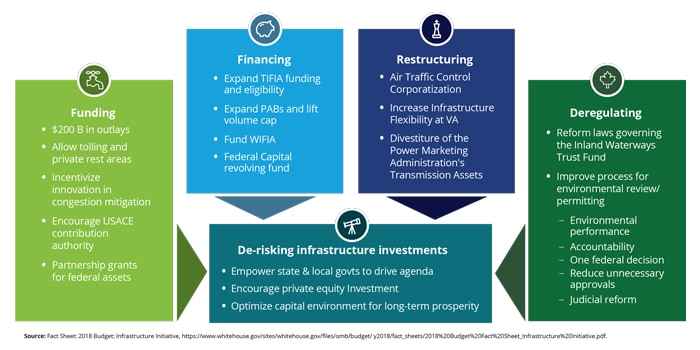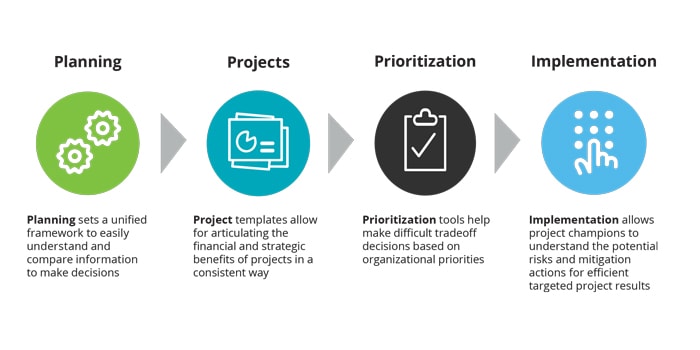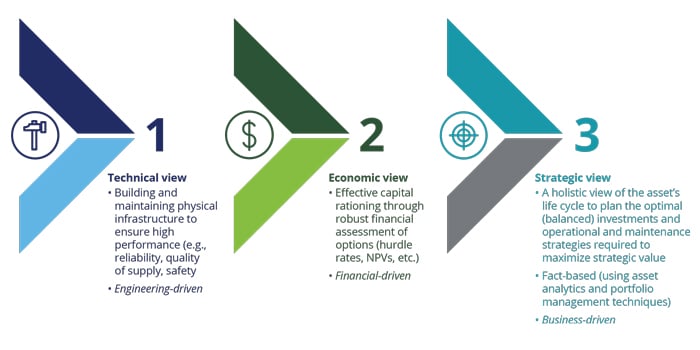Leading practices in infrastructure investment has been saved

Perspectives
Leading practices in infrastructure investment
Identifying and overcoming infrastructure gaps
Expanding and repairing aging US infrastructure demands coordination among all stakeholders—especially federal, state, and local governments. Here's how it can be done.
Explore content
- High spending and an aging infrastructure
- Infrastructure disciplines
- The elephant in the room
- Delivering infrastructure projects
- Call to action
High spending and an aging infrastructure
Every year, the US spends more than $400 billion on public infrastructure. But annual infrastructure funding routinely falls short of capital and maintenance requirements, contributing to deterioration of the country's infrastructure assets.
In 2017, the American Society of Civil Engineers (ASCE) gave US infrastructure a grade of D+ and estimated that an additional $2.1 trillion in infrastructure investments is necessary between 2016 and 2025 to meet demand and reduce negative impacts on the economy. What's more, ASCE has calculated that inadequate infrastructure funding could cost the nation almost $4 trillion in GDP and a loss of 2.5 million jobs through 2025.
Infrastructure assets are costly long-term investments. Many state and local governments that are responsible for delivering them are facing tight budgets and finding it challenging to deliver all the infrastructure they would like to. Bridging this infrastructure gap is a complex interdisciplinary challenge that requires creativity and innovation in the planning, funding, financing, construction, and operations of infrastructure assets.
Click on each infrastructure discipline to learn more

Advancing infrastructure projects
The current administration is seeking to create a climate that will make it easier for state and local governments to advance infrastructure projects.

Adopt a life-cycle view
Infrastructure life-cycle cost analysis not only allows for the comparison of different projects or project delivery mechanisms over time, but it also informs decision makers about the full expenses that will be required over the life of the asset.

Coordinated infrastructure planning
Solutions should follow a standardized methodology and enable users to obtain proven and repeatable results. Infrastructure initiatives should be tailored to the specific needs of the organization, allowing customization of the solution set to address specific needs.

Managing infrastructure assets over their life cycle
Over the past few years, infrastructure asset management (IAM) has evolved from the engineering-driven technical view of an asset, through effective capital rationing, to a multi-stakeholder business-driven strategic view of the asset and its future.
The elephant in the room: Funding
The core challenge to infrastructure investment and development in the US has been—and continues to be—the availability and suitability of funding mechanisms.
The debate on infrastructure procurement generally focuses on developing innovative ways to finance projects. But the more pressing concern is often the need to identify appropriate funding sources that will pay for their creation and maintenance over their useful life. The difference between the two is subtle but important. Frequently, these two terms are used interchangeably, further muddling the discussion.
Funding versus financing
Funding: The revenue or public spending that pays for the development and ongoing maintenance of an asset or service. It’s the money that doesn’t have to be “paid back.”
Financing: The structure and related instruments used to leverage or securitize future funding sources. It’s the money that’s borrowed to build the project, and it’s paid back from the funding sources.
Delivering infrastructure projects
Public sponsors today have a variety of choices when it comes to the components of infrastructure planning and delivery:
- Traditional public sector procurement or innovative procurement approaches utilizing the private sector's capital and efficiencies
- Financing available in multiple markets, including municipal bonds, project finance loans, dedicated federal credit programs, and private equity investments
- Modern tools that assist in goal-oriented infrastructure investment analysis and prioritization/optimization processes, increasing confidence that the "right" projects are being built at the right time
- Ways of communicating with multiple stakeholders (including voters) on the life-cycle costs and benefits of specific programs and projects that can lead to the approval of new projects and even new funding streams
- Digital innovations in capital project management and oversight, as well as grants management, which increase the efficiency and speed of project delivery
- Active physical infrastructure asset management that improves life-cycle costs and planning of an infrastructure portfolio

The call to action
All levels of government are taking steps toward the implementation of a revival plan for US infrastructure. The successful implementation of a large-scale infrastructure rehabilitation plan in the US will require an increase in coordination among all stakeholders, including federal, state, and local governments and private investors. The adoption of a “partnership” approach to solving infrastructure problems could help focus efforts on communicating the benefits and costs of each project within the context of an overarching long-term plan. A few proposed steps are listed here and expanded in the sections below. These action items could help governments at all levels of the US optimize their infrastructure investment approaches:
- Be ready. Identify and prioritize projects and identify the potential for private sector involvement.
- Adopt a life-cycle view that evaluates projects over their entire useful life.
Specific actions that can be taken to execute on these two imperatives include:
- Coordinate infrastructure planning to maximize social value
- Standardize infrastructure investment reviews and approvals to facilitate decision making
- Identify infrastructure funding mechanisms for each project
- Formalize infrastructure grants management to improve funding
- Explore innovative financing and procurement mechanisms to deliver "better, faster, cheaper"
- Leverage digital technology to improve capital projects delivery
- Manage infrastructure assets over their life cycle to optimize value

Staying disciplined
The time is ripe for the public sector to improve and integrate its approach on infrastructure planning, procurement, and delivery in the United States. The public sponsors who seize the current opportunity and fully utilize the available tools for infrastructure development will be the ones who rapidly develop commerce and trade in their regions. Ultimately, this will enable their economies to compete nationally and internationally, making them more attractive for businesses and individuals alike.
To read the full report, download Investing in Infrastructure: Leading practices in planning, funding, and financing.

Recommendations
Build construction projects better
Turn risk into confidence


